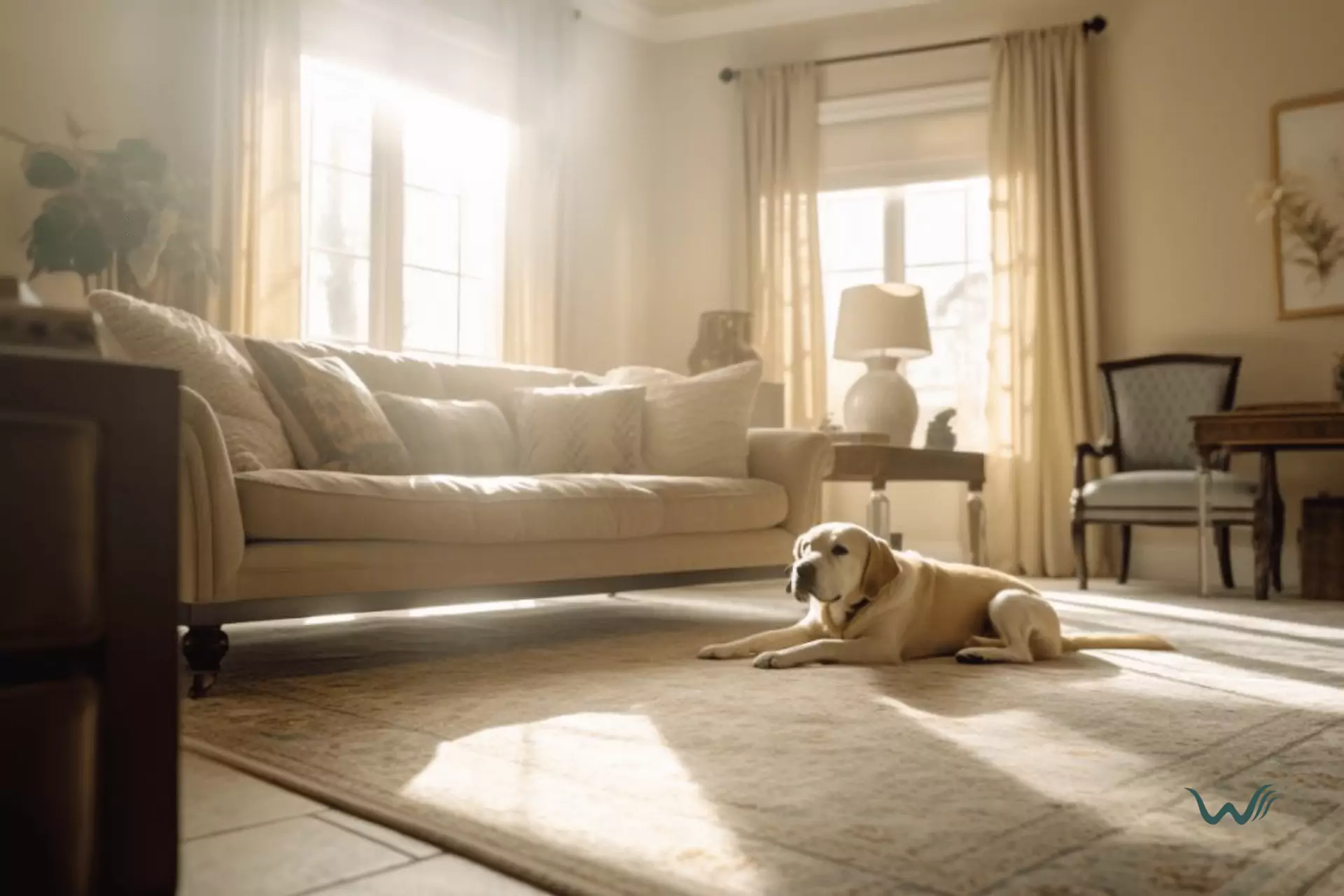

Setting Boundaries For Service Pets: Training Tips
by Tayyaba Amir
Last updated: April 20, 2024
Verified and Approved by:
Angela Morris,
MSW, LCSW
Fact Checked

Are you tired of your service pet constantly invading your personal space and causing chaos wherever they go? Well, it’s time to set some boundaries and establish clear expectations for your furry companion. In this article, we will explore some training tips that will help you teach your service pet the importance of respecting personal space and behaving appropriately in various situations.
Let’s face it, having a service pet is a blessing, but it can also be a bit of a challenge. While they are there to assist and support you, it’s important to remember that they are still animals with their own instincts and desires. That’s why setting boundaries is essential to ensure a harmonious relationship between you and your service pet.
So, grab your treats and get ready to embark on a journey of training and taming your furry friend. Together, we will explore techniques for establishing clear expectations, consistency in training methods, using positive reinforcement, and addressing any challenges along the way.
Key Takeaways
- Boundaries are essential for a harmonious relationship with service pets.
- Clear expectations should be communicated using simple and direct language, gestures, and body language.
- Consistency in training methods and positive reinforcement techniques are important for successful training.
- Challenges and troubleshooting can be overcome with patience, treats, and finding solutions.
Understanding the Importance of Boundaries
Can you imagine the chaos if service pets didn’t know where their limits are? Picture this: you’re at a fancy restaurant, enjoying a nice meal, when suddenly a service dog jumps onto the table and starts devouring your plate of steak. Talk about a doggone disaster! By setting boundaries, you can prevent such hilarious yet inconvenient situations from happening.
Boundaries are like invisible fences that guide our furry friends in their behavior. They help service pets understand what is acceptable and what is not. Without boundaries, you might find yourself in a never-ending game of fetch with your service dog, constantly chasing after them as they run off with your keys or that important document you were working on. Trust me, it’s not a good look. But with boundaries in place, you can teach your service pet when it’s time to work and when it’s time to play, avoiding any embarrassing incidents and keeping your sanity intact.
Setting boundaries for service pets not only benefits you but also helps them stay focused on their tasks. Just imagine if your service dog decided it was time to take a nap right in the middle of an important meeting or a crowded street. People might think you’ve lost your marbles! By establishing clear boundaries, you can ensure that your four-legged companion understands when it’s appropriate to relax and when they need to be alert and attentive.
Establishing Clear Expectations
First, make sure you clearly communicate your expectations to your furry companion. I mean, they’re not mind readers, right? So, sit down with your service pet and have a heart-to-heart conversation. Explain to them what you expect from them in terms of behavior and boundaries. Use simple and direct language, like “No jumping on strangers” or “Stay by my side when we’re out in public.” And don’t forget to use plenty of treats and positive reinforcement to reinforce those expectations. Trust me, a well-fed service pet is a happy service pet!
Now, I know what you’re thinking. “But how can I communicate with my pet if they don’t speak English?” Well, my friend, that’s where the beauty of training comes in. You see, animals are incredibly smart and can pick up on cues and signals. So, use gestures and body language to convey your expectations. For example, if you want your furry companion to stay in one spot, try pointing to the ground and saying “Stay.” And hey, if they get it right, give them a high five or a belly rub as a reward. Positive reinforcement goes a long way in establishing clear expectations with your service pet.
Consistency in Training Methods
To achieve consistent results in training your service pet, do you find it helpful to use the same methods every time? Well, let me tell you, consistency is key! Just like when you’re trying to lose those extra pounds and you keep eating spinach smoothies every morning (seriously, who actually likes spinach?), using the same training methods will help your furry friend understand what you expect from them. It’s like speaking the same language, except instead of words, you’re using treats, commands, and lots of belly rubs!
Now, I know what you’re thinking. “But what if my pet gets bored with the same old routine?” Trust me, I get it. I mean, who wouldn’t get tired of doing the same thing over and over again? But here’s the thing, my friend. Consistency doesn’t mean you have to be boring! Spice things up a little! Throw in a funny voice when giving commands or do a little dance while your pet follows your lead. Not only will it keep things interesting for both of you, but your pet will also think you’re the coolest human ever.
Positive Reinforcement Techniques
When training your service pet, it’s important to focus on using positive reinforcement techniques. This means rewarding your pet for good behavior rather than punishing them for mistakes. Positive reinforcement not only helps to build a strong bond between you and your pet, but it also makes the training process more enjoyable for both of you.
So, grab some treats and get ready to have some fun with these positive reinforcement techniques!
- Clicker Training: Start by introducing your pet to the sound of a clicker. Every time they do something you want to reinforce, such as sitting or staying, click the clicker and immediately give them a treat. This helps your pet associate the clicker sound with a reward and encourages them to repeat the behavior.
- Verbal Praise: Dogs love to hear their human’s voice, so don’t be shy about showering your pet with verbal praise. Use a happy, excited tone to let them know they’re doing a great job. You can say things like, “Good boy!” or “You’re so smart!” This positive reinforcement will make your pet feel loved and appreciated.
- Toy Rewards: Who says treats are the only way to reward your pet? Mix things up by using toys as rewards for good behavior. After your pet successfully completes a command, give them a toy to play with as a special treat. This adds an extra element of fun to the training process and keeps your pet engaged.
Training should be a positive and enjoyable experience for both you and your service pet. By using these positive reinforcement techniques, you can set your pet up for success while strengthening your bond.
Addressing Challenges and Troubleshooting
Despite the potential hurdles and obstacles, it’s important for you to address challenges and troubleshoot when training your service pet. Let’s face it, training any pet can be a bit like herding cats. But fear not, because, with a little patience and a lot of treats, you can overcome any challenge that comes your way.
One common challenge you may encounter is your service pet getting distracted. It’s like they have the attention span of a goldfish at times. But don’t worry, you can work through this. Try using high-value treats or toys to keep their focus on you. And if that doesn’t work, well, you can always resort to bribery.
Another challenge you might face is your service pet not responding to your commands. It’s like they suddenly develop selective hearing whenever you say “sit” or “stay.” In these situations, it’s important to remember that consistency is key. Keep practicing the commands in different environments and reward them when they do respond correctly. And if all else fails, just pretend like you’re talking to a teenager and repeat yourself until they finally listen.
Frequently Asked Questions
How do I determine the appropriate boundaries for my service pet?
To determine the appropriate boundaries for your service pet, establish clear rules and consistently reinforce them. Use parallelism by setting physical and social boundaries, ensuring your pet understands their role while keeping a touch of humor to make it engaging.
Can I set different boundaries for my service pet in different environments?
Absolutely! Different environments may require different boundaries for your service pet. For example, you might allow more freedom at home, but stricter rules in public places. Just be consistent and clear in your training. Happy boundary setting!
What should I do if my service pet consistently crosses the established boundaries?
If your service pet consistently crosses boundaries, think of it as a mischievous squirrel. Use humor and creativity to find ways to redirect their energy and reinforce the boundaries. Stay persistent and patient, and eventually, they’ll get it!
Are there any specific training techniques that can help reinforce boundaries effectively?
To reinforce boundaries effectively, use positive reinforcement and consistency. Reward your service pet with treats or praise when they stay within the boundaries and redirect them gently when they cross. Remember, patience and a sense of humor go a long way!
How long does it usually take for a service pet to fully understand and respect the set boundaries?
It usually takes time and consistency for service pets to fully understand and respect the set boundaries. Just like us humans, they need practice and repetition to learn and adapt. So, be patient and keep reinforcing those boundaries!
Certify Your Emotional Support Animal Today

Why You Can Rely on Us?
At Wellness Wag, we believe your pet deserves care rooted in both science and compassion. Each article is carefully researched, written in clear language for pet owners, and then reviewed by qualified professionals to ensure the information is evidence-based, current, and practical for real-life care. Our goal is to help you feel confident in making informed decisions about your pet’s health and well-being.
Reviewed by
Angela Morris, MSW, LCSW
Angela is a licensed clinical social worker with 20 years of experience in patient advocacy and community mental health. She has assisted numerous clients with ESA evaluations and brings a deep understanding of disability accommodations, ensuring that all information is accurate, supportive, and practical.

Written by :
Tayyaba Amir
Last Updated :
April 20, 2024










